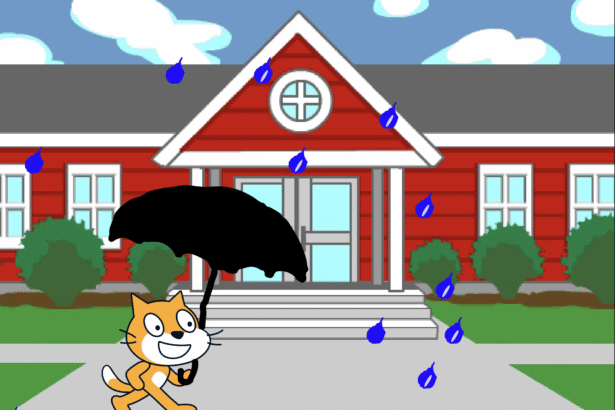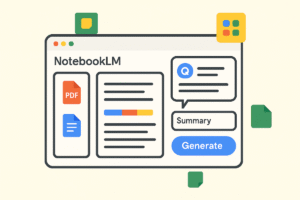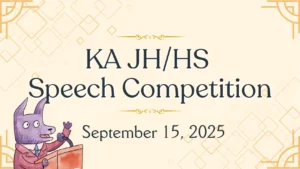I used to think five-year-olds were just playing with digital blocks, but can they actually code? After five years of teaching Scratch to young Japanese learners in international schools, I’m still amazed. Here are children, some of whom are still learning to tie their shoes, arranging colorful squares to make characters dance on a screen. This program, Scratch, developed by MIT, is presented as a tool to change education. From my perspective in the classroom, I’ve seen both its brilliance and its chaotic side.
My overarching concern is what, precisely, are the students learning. Coding, or is it English? Both, apparently. They enter English-language commands such as “move forward” and “say hello” to bring their inventions to life. Is the software perfect? Far from it. It’s like a giant box of crayons—you’ve got all the crayons, but you still need to know the basics about drawing. Some children grasp it immediately, while others stare at the screen as if it were a foreign language, which it is for Japanese children studying English‑language commands.
But when I observe an eight-year-old debug their very own project and describe their rationale to a peer, I understand that this visual programming is not some watered-down version of coding. It’s the fundamental logic of programming, but without the pesky syntax that traps even veteran developers. For my class, it’s a method that very obviously works.
What is Scratch?
Scratch is the LEGO of computer programming—fun, clicky, and perpetually creative. Introduced in 2007 by MIT, Scratch is an online community and block-based programming language in which members make interactive stories, games, and animations through connecting code blocks together. Aimed for children aged 8-16, but usable for younger children under adult guidance, as I have experienced with our 5-year-olds. There is no keyboarding required, making it an ideal activity for newbies or literacy masters.
For English learners,
Scratch is a playground for creativity and language practice. Students can script character dialogues or design vocabulary games in English. According to the Scratch Foundation’s 2024 annual report, Scratch is home to over 121 million registered users worldwide. Available in over 70 languages, Scratch is a global hub for young creators, ideal for Japan’s international schools.
Comparison to Other Tools
Scratch isn’t alone in the kid-coding world, but it shines in multilingual settings. Here’s how it compares to other block-based tools:
| Tool | Age Range | Key Features | Pros | Cons |
|---|---|---|---|---|
| Scratch | 8-16 (5-8 with guidance) | Block-based, storytelling, animations, and community sharing | Creative freedom, multilingual, safe community | Internet required, less text-based coding focus |
| Scratch Jr. | 5-7 | Simplified block-based, mobile-friendly | Great for younger kids, offline option | Limited project complexity |
| Tynker | 7+ | Block-based, transitions to text-based coding | Structured courses, game design focus | Subscription for full access |
| Blockly | 8+ | Block-based, used in robotics/web | Open-source, versatile | Less community engagement |
| Snap! | 8+ | Advanced block-based, Scratch-like | Complex project support | Steeper learning curve |
Scratch’s storytelling focus is perfect for English learners crafting narratives, unlike Blockly’s robotics emphasis or Tynker’s subscription model. Its 70+ language support gives it an edge in Japan’s international schools, where students toggle between Japanese and English. Check out a few more Scratch Coding Alternatives.
Unique Features of Scratch
Scratch’s features make it a teacher’s dream in international settings:
- Block-Based Interface: Colorful blocks represent code, letting kids focus on logic. Students snap commands like “move 10 steps” or “say Hello,” seeing instant results.
- Online Community: Students share projects, remix others’ work, and comment, fostering collaboration and English practice. Moderated for safety, no real names are used. Check out the Scratch Educator’s Page.
- Multilingual Support: Available in 74 languages, Scratch lets students switch between Japanese and English, aiding language acquisition.
- Hardware Integration: Connects with micro:bit or LEGO Mindstorms, introducing robotics and sparking tech interests.
- Resources: Tutorials, coding cards, and lesson plans, like Harvard’s Creative Computing Curriculum, simplify teaching.
These features create a safe, engaging space for coding and language growth, aligning with international school goals.
User Experience
It’s like witnessing magic when you teach Scratch to beginner English learners. One such quiet student developed an animation in which a character was saying, “I can do it!” in English, exuding newfound confidence. Another developed a quiz game which posed the question, “What’s the weather today?” combining coding sense with English vocabulary. Such incidents illustrate the ability of Scratch in enhancing skills as well as building self-confidence.
I teach lessons through role-playing: pupils act out project scripts, reciting “Hello, friend!” word for word, practicing spoken English while coding. Seeing visual feedback in Scratch—the sprite dancing after establishing a “glide” block—helps engrain cause-and-effect, a cornerstone of logical thinking. I screen-share during online lessons to demo blocks, which pupils do on tablets or PCs, submitting projects for feedback in English. The user-friendly nature of Scratch makes 5-year-olds able to do simple animations, but teenagers code complex games.
Use Cases
Scratch fits seamlessly into various teaching scenarios in international schools:
- Classroom Learning: I use Scratch for group projects, like a class story where each student adds an English dialogue scene. Only a browser-equipped device is needed.
- Online Teaching: Via video conferencing, I demo Scratch’s interface, and students work remotely. Cloud-based accounts enable anytime access and feedback.
- Multilingual Classrooms: Scratch’s language toggle lets Japanese students start in their native language, then switch to English, reinforcing vocabulary. Projects like greeting animations align coding with language goals.
- Extracurricular Clubs: Coding clubs explore game design, sparking interest in technologies like Unity or Roblox, popular in tech-savvy international schools.
- Project-Based Learning: Scratch supports cross-curricular projects, like a science animation explaining photosynthesis in English, integrating STEM and language learning.
- Cultural Projects: Students code animations about Japanese festivals, like Obon, with English narration, fostering cultural awareness and language skills.
Scratch’s accessibility ensures students can create anywhere, aligning with the flexible needs of international schools.
Strengths and Limitations
Strengths
- Accessibility: Browser-based, requiring no software, perfect for basic-tech schools.
- Creativity: Games and animations engage kids, boosting motivation.
- Language Integration: Storytelling projects enhance English skills, ideal for ESL students.
- Safety: Moderated community and no real names ensure security.
- Logical Thinking: Coding sequences and conditionals teach problem-solving.
Limitations
- Internet Reliance: Full features need online access, a barrier in some areas.
- Distractions: The community can divert focus without guidance.
- Text-Based Transition: Block-based nature requires additional tools for languages like Python.
Scratch’s strengths outweigh its limitations, making it a top choice.
Who Should Use It?
Scratch is perfect for:
- Kids Aged 5-16: Younger learners start with Scratch Jr., progressing to Scratch.
- English Learners: ESL students benefit from English-based projects, common in Japan’s international schools.
- Beginner Coders: Intuitive interface suits those new to programming.
- Teachers: Ideal for integrating tech and language into curricula.
- Tech-Curious Kids: Sparks interest in robotics, game design, or coding.
For my Japanese students, Scratch bridges coding and English, fostering global competence.
Connection to International Schools in Japan
International schools in Japan, for instance, The American School in Japan and Yokohama International School, value technology and international skills.Scratch fits their curricula because it introduces coding at an early age and facilitates English development, in readiness for tech-influenced careers in the multilingual world.
Final Thoughts
Teaching With Scratch is like putting kids in possession of a magic wand—they code, they learn, they laugh, and they become proficient in coding and in English. My students have evolved from timid coders to fearless creators, meshing “konnichiwa,” “hello,” loops, and laughter. Within Japan’s international schools, where international competencies reign supreme, Scratch equips students to think programmatically, to be communicative, and to be future-ready in a tech-centric world. Its accessibility, safety, and convenience ensure it is an indispensable tool. Whether in Tokyo or on the Web, Scratch blazes doors open to programming, language, and limitless possibilities. Get on a browser and watch your students fly!








